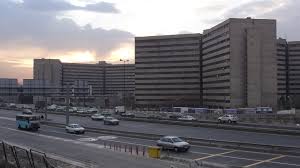
Introduction to Tehran
Tehran, the capital of Iran, is a bustling metropolis that plays a crucial role in both the cultural and political landscape of the country. As one of the largest cities in the Middle East, Tehran is not only the administrative heart of Iran but also a vibrant center of history, art, and education. With a population exceeding 8 million, Tehran serves as a key player in the country’s overall economy and a focal point for international relations.
Recent Developments in Tehran
In recent months, Tehran has been at the epicenter of various significant events, particularly surrounding political changes and social movements. Following the 2021 presidential elections in Iran, many citizens expressed their dissatisfaction with government policies, culminating in widespread protests fueled by issues such as economic inequality, unemployment, and governmental transparency. These protests have drawn attention to the struggle for reform within the country and have led to discussions about future directions for Iran’s leadership.
Moreover, Tehran has also been a focal point for international diplomacy, particularly in regards to the ongoing discussions about Iran’s nuclear program. Efforts to reinstate the Joint Comprehensive Plan of Action (JCPOA) have faced numerous obstacles, contributing to tensions between Iran and Western countries. Recent negotiations in Vienna have become a hot topic, reflecting worldwide interest in Iran’s role on the global stage.
Tehran’s Cultural Significance
Culturally, Tehran is home to an array of historical sites, museums, and a thriving arts scene that reflects its rich Persian heritage. The Golestan Palace, the National Museum of Iran, and the vibrant Grand Bazaar are just a few of the attractions that draw both locals and tourists. The city also boasts a burgeoning contemporary art scene, with galleries showcasing the work of local and international artists, further solidifying its status as a cultural hub.
Conclusion: The Future of Tehran
The developments within Tehran Iran hold profound significance, not just for its citizens but also for the international community. As social movements continue to shape the political landscape, and as negotiations regarding economic sanctions progress, the world watches closely. Tehran’s journey reflects the complexities of modern Iranian society, where the clash of tradition and modernity creates an evolving narrative that is likely to influence the region’s future. For those interested in geopolitics, Iran’s capital offers a lens through which the dynamics of the Middle East can be observed.



